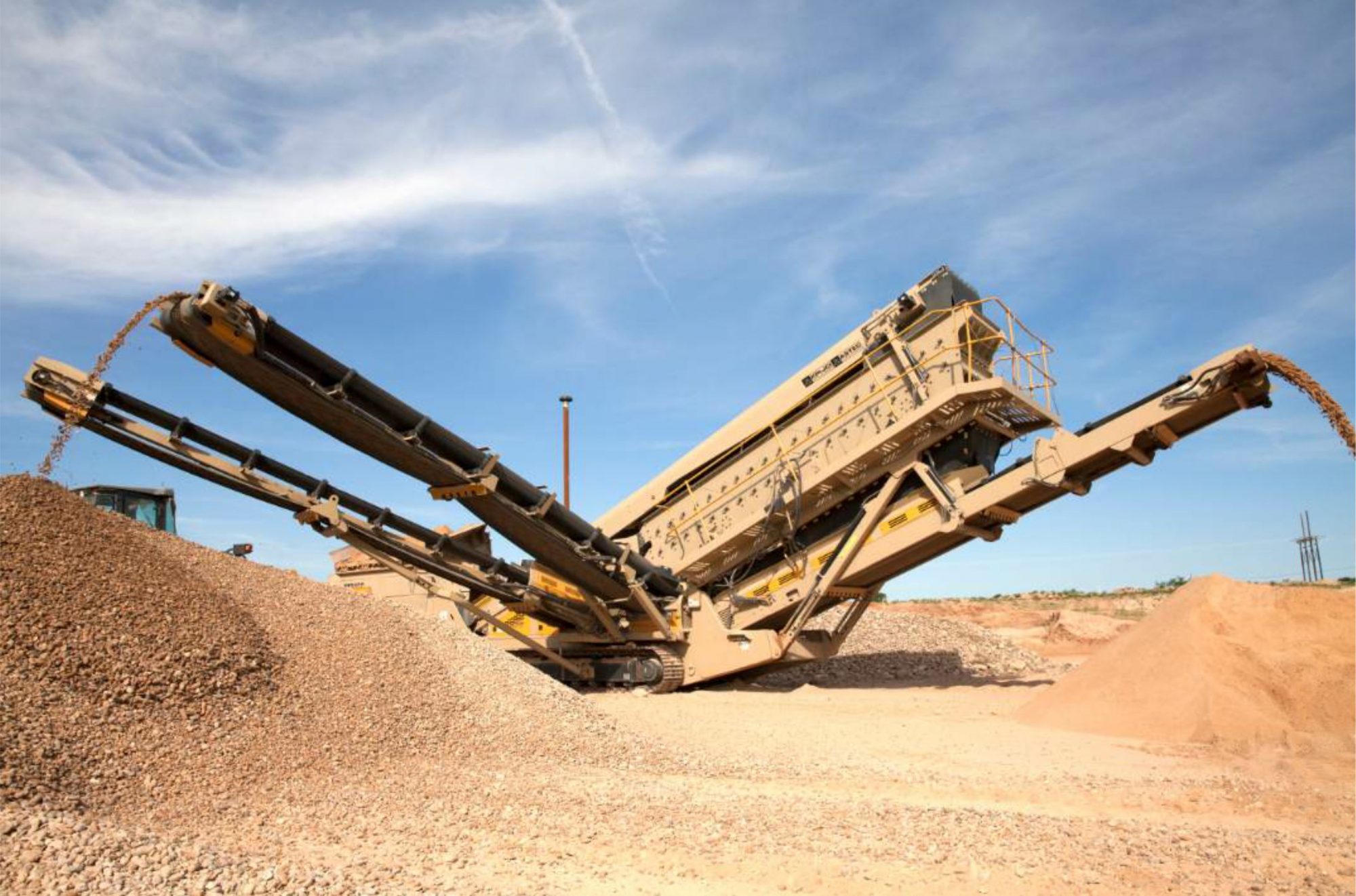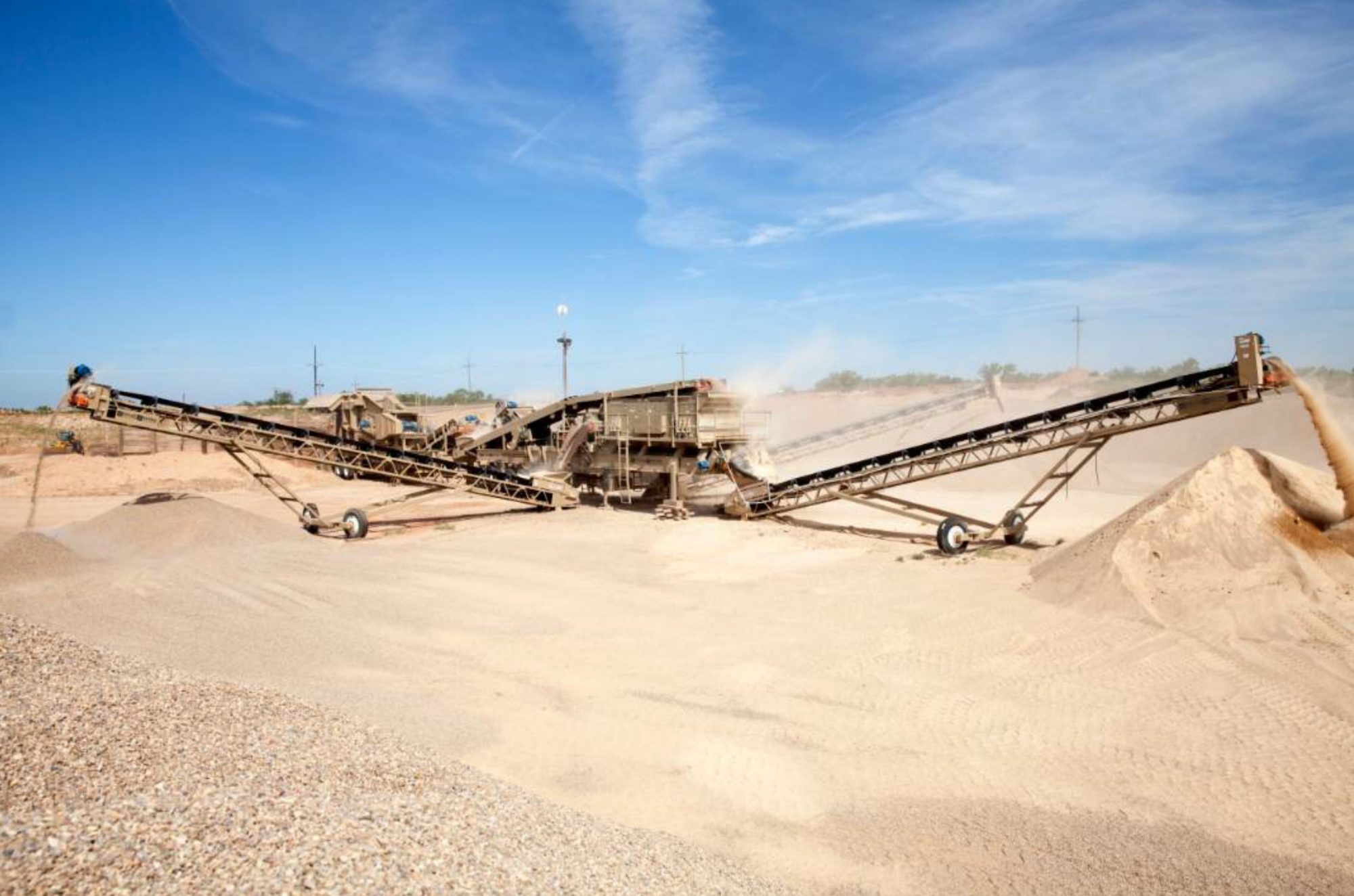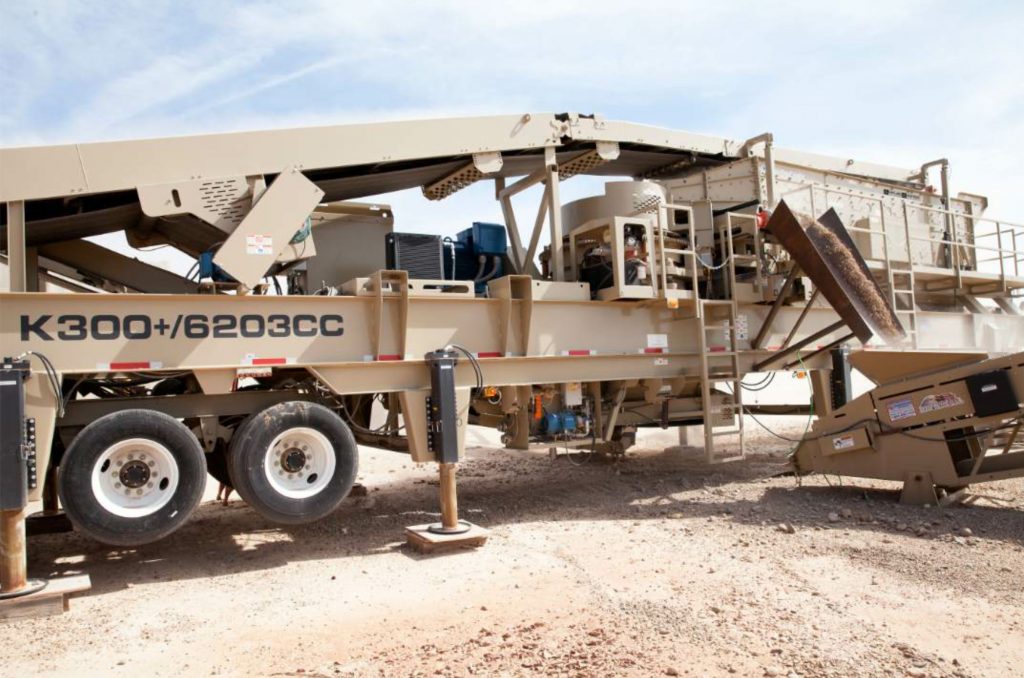Big Creek Sand and Gravel Doubles Production
BY KPI-JCI and Astec Mobile Screens

For Charlie Harvey, crushing superintendent of Big Creek Sand and Gravel in Borger, Texas, achieving the production needed to meet recent demand meant investing in new equipment that could double—and in some cases triple—the operation’s output.
Production Meets Performance
Big Creek Sand and Gravel, formerly known as E.D. Baker Company, has been in operation for more than 20 years. The company offers a variety of services, including commercial aggregate sales, trucking, asphalt paving, earth work, wind generation work, highway construction and airport construction. Some of its major clients include the Texas Department of Transportation, Brazos Wind Ranch and Conoco-Phillips Company.
Knowing the company needed to increase production, Harvey began searching for a crushing spread that was highly portable, durable and high performing. The system that worked for his needs is the 2650 Pioneer® jaw crusher and the new K300/6203CC portable crushing and screening plant, which he purchased from authorized dealer Texas Bearing Company in Amarillo, Texas.
One of the key features that drew him to the Pioneer jaw crusher was the hydraulic dual wedge closed-side-setting (CSS) adjust, which eliminates manual shims and provides quick adjustment and enhanced safety, according to the manufacturer. The ability to adjust on the fly increases production by several hundred tons every time an adjustment is needed, Harvey said. He explained that their older crusher took about half a day to adjust manually. With the new crusher, “you’re going within minutes,” he said.
At Big Creek Sand and Gravel’s operation, the Pioneer jaw crusher feeds directly into the K300/6203CC, a newly-released plant that combines a heavy-duty, roller bearing Kodiak® Plus K300+ cone crusher with a triple-shaft, low-profile horizontal screen. In its closed-circuit configuration, the K300/6203CC allows producers to use a single chassis to produce up to three finished products or supplement existing demand in a small footprint, reducing the number of auxiliary conveyors they require.

Harvey estimated the old system produces less than 40 tons per hour making 3/8-inch minus rock. By using the Kodiak Plus K300+, that number tripled, he said. When making 1-1/4-inch minus material, his production increased so much that his loader couldn’t keep up, requiring him to switch to a larger loader.
“We couldn’t feed material fast enough making 1-1/4-inch minus,” Harvey said. “Even our larger Kawasaki 92ZV loader couldn’t keep up. We had to have our other loaders come back in and throw a bucket in whenever they had time.”
Screening Versatility
The addition of the new crushing spread meant additional screening power was needed on site, so Harvey sought out a mobile screening plant that could keep up with the increase in production.
Already familiar with the GT205S—in 2012, the company purchased the very first GT205S from KPI-JCI and Astec Mobile Screens—Harvey decided to invest in a second unit. The GT205S is a double- or triple-deck track-mounted screening plant designed for producers processing sand and gravel, top soil, slag, crushed stone, and recycled materials.
Harvey uses the GT205S to process concrete rock and hot-mix material. By using three screen decks, he is able to make A4 rock, a size of material the company previously had to discard. Now, Big Creek Sand and Gravel is able to avoid wasting material and can offer more products to its customers, he said.

The Pioneer® jaw crusher feeds directly into the K300/6203CC, which combines a Kodiak® Plus K300+ cone crusher with a triple-shaft, low-profile horizontal screen for Big Creek Sand and Gravel’s operation.
“With our old two-deck screening plant, we were limited with the products we could make,” Harvey said. “The three-deck screen allowed us to make a product that is in demand that we were previously wasting.”
The GT205S has also proven to double screening capacity, compared to the company’s old two-deck screening plant, Harvey said.
“Our pit has quite a bit of sand in it, and with the triple-deck screening plant, we get much better screening capacity and can remove a lot more sand than we could with the regular two-deck screen,” he said.
